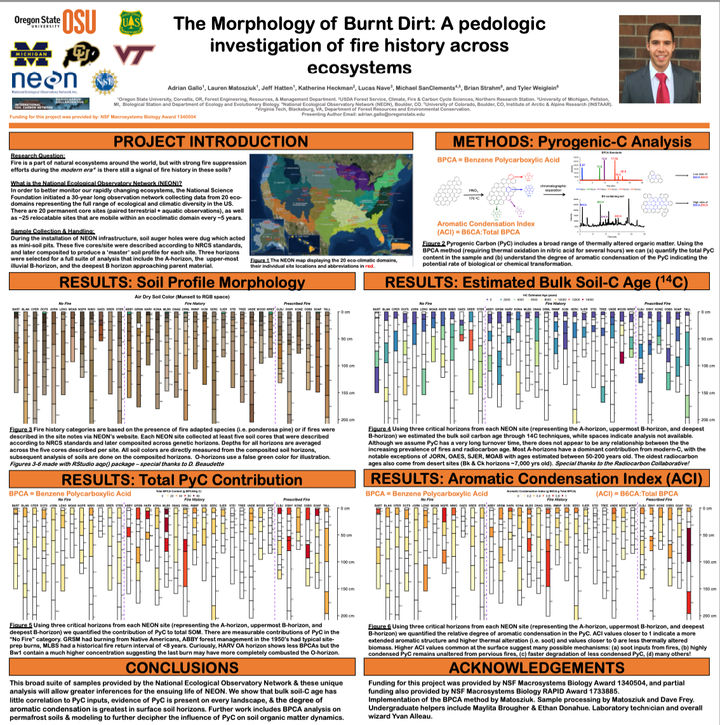The Morphology of Burnt Dirt: A pedologic investigation of fire history across ecosystems

TLDR
Fire-derived carbon has a bit or an enigma about it. Measuring it is hard. Finding visible pieces of charcoal can be tricky. Yet people claim to make all kinds of ‘biochar’ so it can’t be that hard right? Even the classic Schmidt 2011 Nature paper thinks fire-derived carbon is a bit perplexing. Much of the confusion boils down to the difference between messengers: are you trying to measure it, or are you trying to sell it? If you information about fire-derived carbon comes from the latter, it’s best to remain skeptical. So, then, what is it?!
Fire-derived carbon is the material formed from the incomplete combustion of organic matter. Complete combustion would mean all that lignin and cellulose and plant waxes would have been converted as CO2, and this is pretty rare. It’s natural in fires to have incomplete combustion, but the material that’s left behind is a function of the temperature, duration, oxygen content during combustion, intensity of fire, and of course the original feed stock (i.e. pondorosa pine vs switchgrass).
Turns out soils are fantastic history recorders, although the information is coded. We used the Benzene Polycarboxylic Acid method to decode how much pyrogenic carbon was present, but also its relative quality (or degree of condensation). If you know anything about ecology that spans time horizons beyond settler-colonial practices in the present day US, you shouldn’t be surprised to learn there a bunch of relic PyC in surface and subsurface soils. While analysis is on-going, there does not seem to be a relationship between PyC content and the carbon age (14-C). We can think of many reasons why, but out of brevity’s sake I’ll leave it there.
Please do reach out if you have any questions on pyrogenic carbon, ecosystem ecology post-fire, or anything else tangentially related.
You can download the original PDF Presentation.